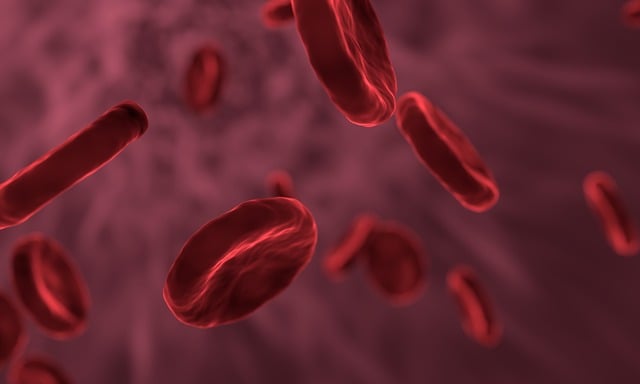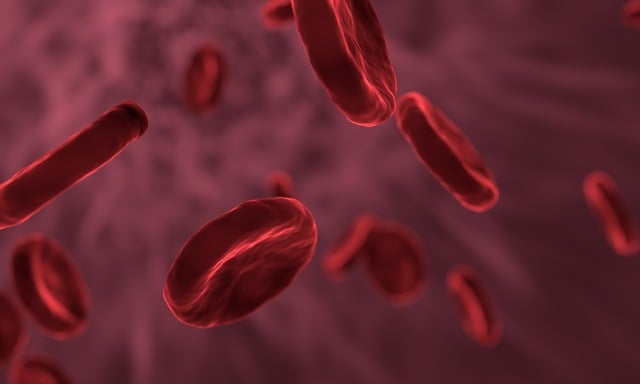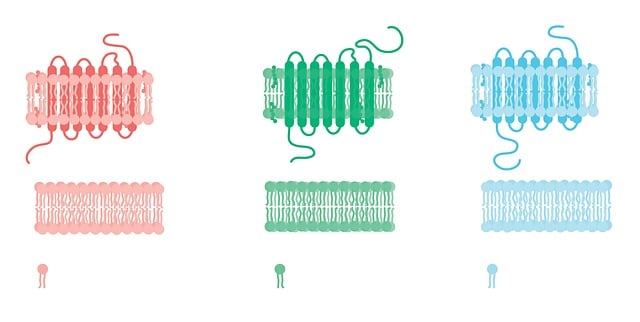Fat Cell Freezing (cryolipolysis) is a non-invasive, safe, and effective method for reducing stubborn fat deposits in targeted areas like the abdomen, love handles, thighs, and buttocks. Using cutting-edge cooling technology, this procedure freezes and destroys selected fat cells over time, preserving surrounding tissues and offering minimal discomfort with faster recovery times compared to liposuction. Customization is key, with healthcare professionals tailoring treatments based on individual body composition, goals, and anatomy for optimal results. Post-procedure care involves rest, hydration, diet, and avoiding strenuous activities for a smooth recovery. Clinical studies show promising outcomes with significant fat reduction, making Fat Cell Freezing a game-changing non-surgical option for body contouring.
“Discover the transformative power of Customized Fat Cell Freezing, a non-invasive procedure revolutionizing body contouring. This comprehensive guide explores the science behind freezing fat cells, highlighting how customization enhances results. Learn about the benefits of targeted fat reduction and how it safely eliminates stubborn pockets of fat. From understanding eligibility to post-treatment care, we demystify this popular method. Compare Customized Fat Cell Freezing with alternatives and unlock your path to a slimmer, more confident you.”
Understanding Fat Cell Freezing: A Comprehensive Overview

Fat cell freezing, also known as cryolipolysis, is a non-invasive fat reduction procedure that has gained significant popularity in recent years. This revolutionary technique offers an alternative to surgical procedures for those seeking to shed unwanted fat. By targeting specific areas of the body, it freezes and eliminates fat cells, leading to a slimmer silhouette. The process involves advanced cooling technology that selectively cools and crystallizes fat, causing cell death while preserving surrounding tissues.
This comprehensive approach ensures minimal discomfort and faster recovery times compared to traditional liposuction. It is particularly effective for treating localized fat deposits, often in problem areas like the abdomen, love handles, thighs, and buttocks. As a non-surgical option, fat cell freezing appeals to a wide range of individuals looking for a safe and effective way to achieve their desired body contour.
How Customization Enhances Fat Cell Removal

Customization plays a pivotal role in enhancing the effectiveness of Fat Cell Freezing treatments. By tailoring the procedure to an individual’s unique needs, healthcare professionals can ensure more precise and targeted fat reduction. This approach allows for deeper penetration into problem areas, reaching and freezing specific fat cells while minimizing damage to surrounding tissues.
The customization process involves several factors, including assessing body composition, identifying target areas, and considering individual goals. Using advanced technologies like ultrasound guidance, practitioners can visualize and precisely target adipose tissue, leading to more consistent results. This level of personalization not only improves cosmetic outcomes but also contributes to long-term patient satisfaction by addressing specific concerns effectively.
The Science Behind Targeted Fat Reduction

Fat cell freezing, also known as cryolipolysis, is a groundbreaking non-surgical procedure that targets and reduces unwanted fat cells. The science behind this innovative treatment lies in its ability to freeze and destroy specific adipose tissue while leaving surrounding areas unharmed. By using targeted cooling technology, fat cells are subjected to controlled cryo-lesioning, causing them to break down and be naturally eliminated by the body over time.
This procedure differs from traditional liposuction as it doesn’t require invasive incisions or general anesthesia. Instead, it uses a combination of cooling temperatures and vacuum pressure to selectively target fat cells, making it an appealing option for those seeking localized fat reduction without the risks associated with surgery. The process is safe and effective when performed by qualified professionals, offering a non-invasive way to achieve desired body contours.
Benefits of Non-Surgical Fat Cell Freezing

Fat Cell Freezing, or non-surgical fat reduction, offers a multitude of benefits that make it an increasingly popular choice for those seeking to enhance their appearance and overall health. One of its key advantages is the minimal invasiveness of the procedure. Unlike traditional liposuction, Fat Cell Freezing does not require any incisions or general anesthesia, making it a less risky and more comfortable option for patients. This non-surgical approach allows individuals to return to their daily activities almost immediately without the prolonged recovery period associated with surgical procedures.
Additionally, Fat Cell Freezing promotes long-term fat reduction by targeting and freezing fat cells, which results in their gradual elimination from the body. Unlike other methods that may only provide temporary results, this procedure offers a sustainable solution for achieving a slimmer figure. By preserving the overall proportion of the body, Fat Cell Freezing helps individuals achieve their aesthetic goals while maintaining a balanced and healthy look.
Selecting the Right Areas for Treatment

When considering Fat Cell Freezing, selecting the right areas for treatment is paramount to achieving optimal results. The process involves identifying and targeting specific fat deposits that are often stubborn and resistant to diet and exercise. Professionals in this field carefully assess a patient’s body composition, taking into account factors like anatomy, skin elasticity, and the distribution of fat. This strategic approach ensures that treatments are tailored to address problem areas effectively.
For instance, certain zones like the abdomen, love handles, thighs, and buttocks often require specialized attention due to the high concentration of fat cells in these regions. Using advanced imaging techniques, practitioners can pinpoint precise locations for injections, minimizing side effects and maximizing fat reduction. This customized approach is key to achieving a contoured silhouette and enhancing overall body aesthetics through Fat Cell Freezing procedures.
Safety and Success Rates: What to Expect

Fat Cell Freezing, also known as cryolipolysis, is a non-invasive procedure that has gained popularity for its ability to reduce stubborn fat. When it comes to safety and success rates, this treatment has proven to be effective with minimal risks. The procedure involves cooling targeted fat cells until they crystallize and die, allowing the body to naturally eliminate them.
Success rates vary depending on individual factors such as skin type, fat distribution, and overall health. However, clinical studies have shown promising results, with many patients experiencing significant fat reduction in treated areas. As with any medical procedure, there are potential side effects, including temporary redness, swelling, and numbness, but these usually subside within a few days to a week. Regular follow-up sessions can enhance the outcomes, as multiple treatments may be required for optimal results.
Patient Eligibility Criteria for Customized Freezing

Customized fat cell freezing is a procedure that requires careful consideration of patient eligibility criteria. Individuals interested in this treatment should have a healthy weight, with a Body Mass Index (BMI) between 20 and 40. This ensures that there’s sufficient fat for extraction and freezing while minimizing health risks associated with extreme weight loss. Additionally, patients must be free from any significant medical conditions or medications that could impair healing or affect the procedure’s outcome.
Age is another critical factor; typically, candidates are between 18 and 65 years old. This age range offers a balance between youth and maturity, ensuring optimal results. Moreover, patients should have realistic expectations and be committed to lifestyle changes post-procedure, including diet and exercise, as maintaining weight loss is essential for long-term success.
Post-Treatment Care and Recovery Tips

After undergoing Fat Cell Freezing, proper post-treatment care is essential for optimal results and a comfortable recovery. Patients should expect some mild discomfort and swelling in the treated areas, which typically subside within a few days to a week. Ice packs can be applied to reduce any temporary bruising and inflammation. Staying hydrated and maintaining a healthy diet will aid in the body’s natural healing process.
It is recommended to avoid strenuous activities or exercises for a brief period after the procedure to prevent any potential complications. Patients should take things slowly, rest adequately, and listen to their bodies’ signals. Most individuals can resume their regular routines within a few days, but it’s crucial to follow the healthcare provider’s specific advice for a smooth recovery journey.
Comparing Customized Fat Cell Freezing with Alternative Methods

When considering non-invasive body contouring treatments, it’s essential to compare Fat Cell Freezing with alternative methods. Unlike traditional liposuction, which involves surgical removal of fat cells, Fat Cell Freezing targets and crystallizes fat cells in place. This minimally invasive approach offers several advantages, such as reduced downtime, no scarring, and the ability to treat smaller areas or problem zones selectively.
One of its key benefits is long-term results, as frozen fat cells are naturally eliminated by the body over time. Compared to other non-surgical options like high-intensity focused ultrasound (HIFU) or laser treatments, Fat Cell Freezing has shown promising outcomes in clinical trials. While HIFU and lasers target fat cell walls for breakdown, Fat Cell Freezing specifically targets and destroys fat cells, potentially leading to more consistent results.
